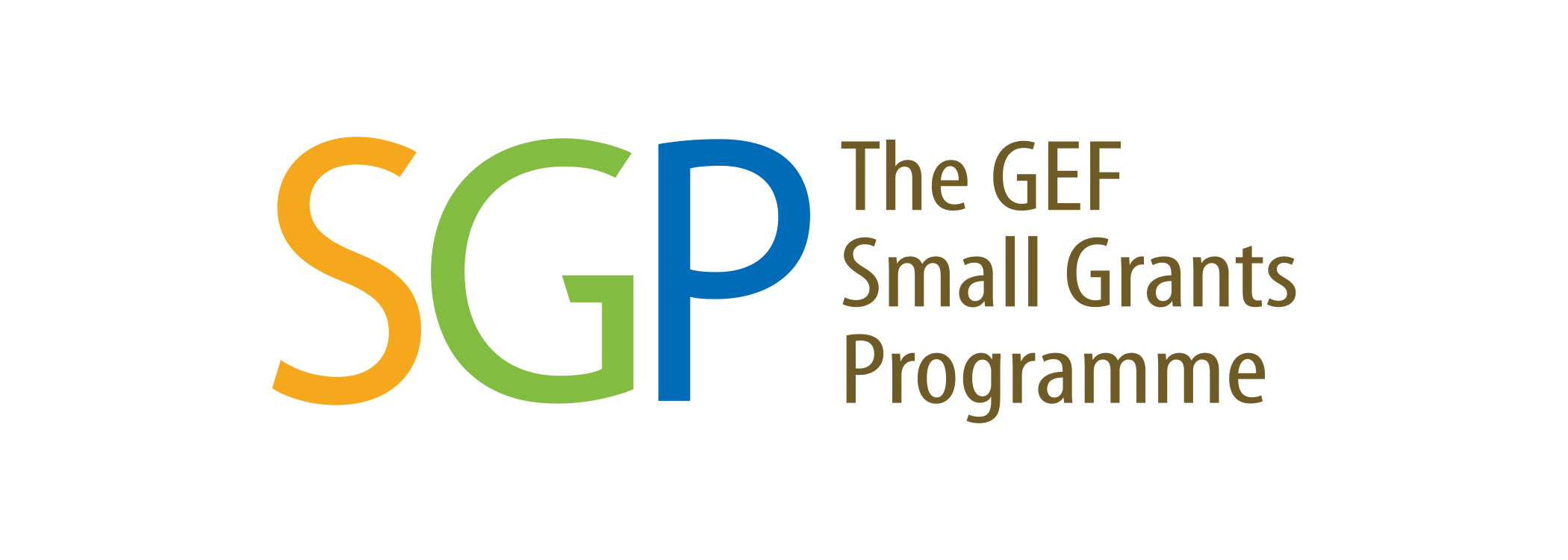Kingdom of the Jaguar
Working with local communities to ensure that the most powerful feline in the Americas continues to take refuge in Panama
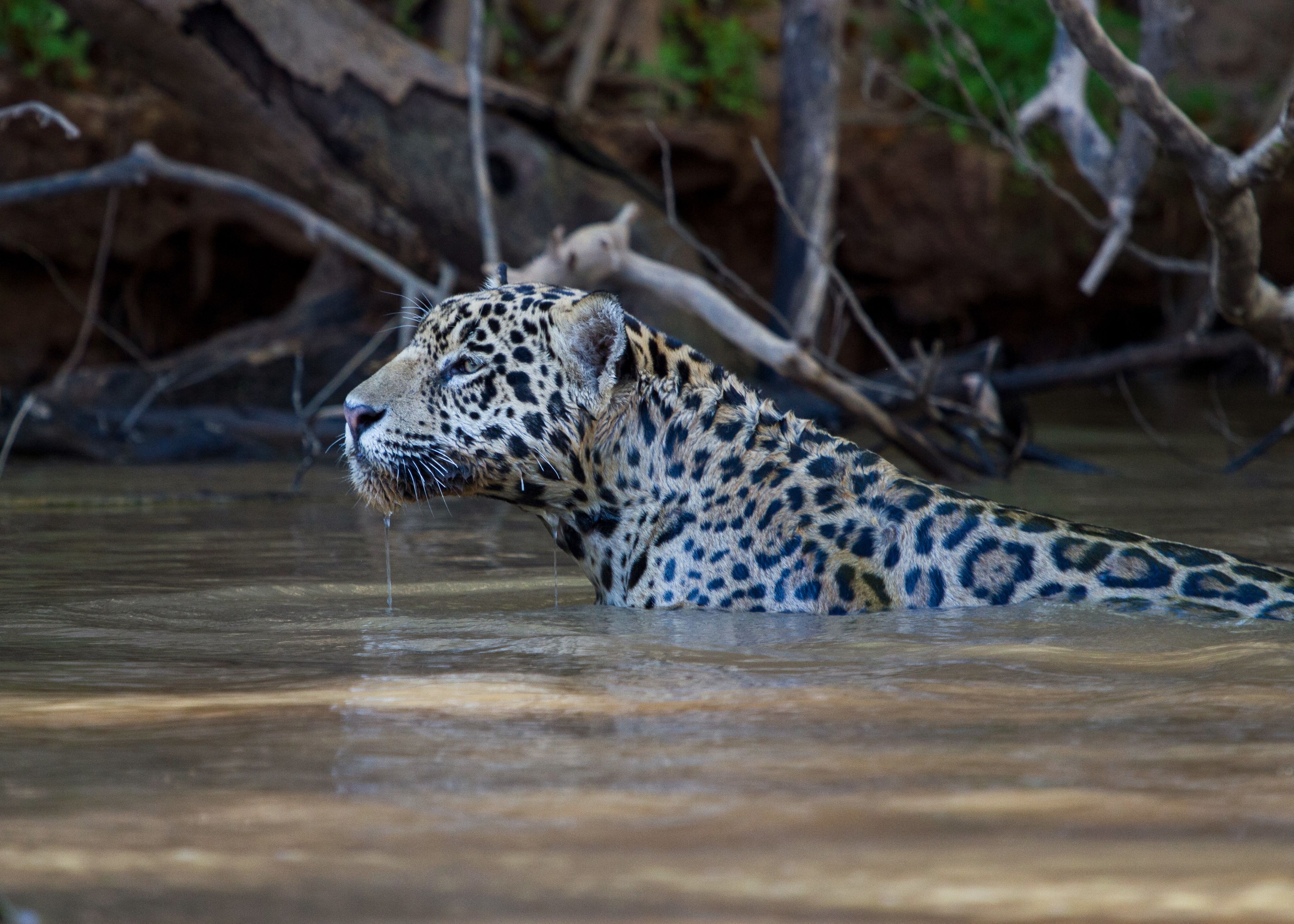
Ricardo Moreno is on a mission to convince Panamanian farmers not to hunt jaguars over fears that they might prey on livestock.
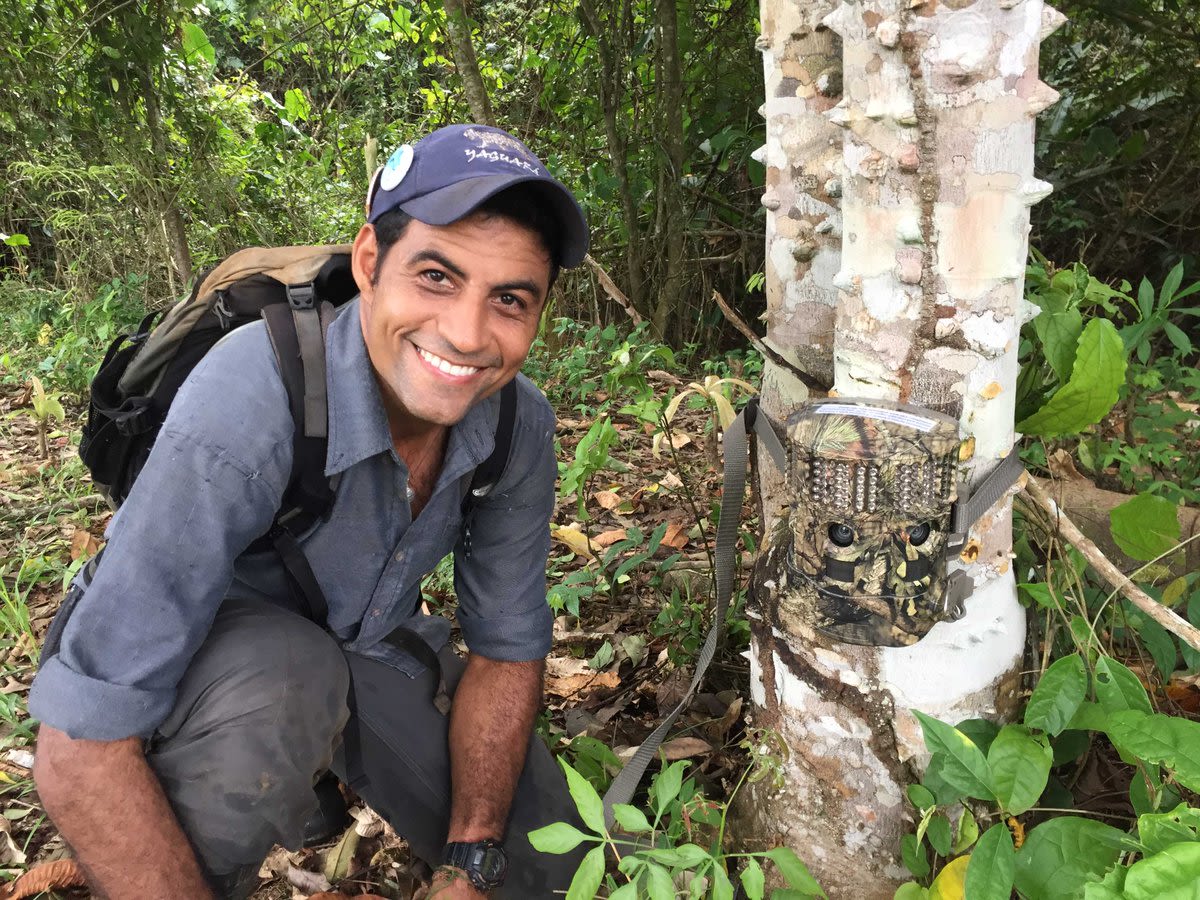
Although small in territory, Panama is a country of immense natural wealth: great biodiversity, abundant water resources, rich soil, and huge tracts of tropical forests. It is also home to some of the world’s threatened jaguars.
Ricardo Moreno is part of an organisation, Fundación Yaguará Panamá, that is transforming the protection of these precious felines.

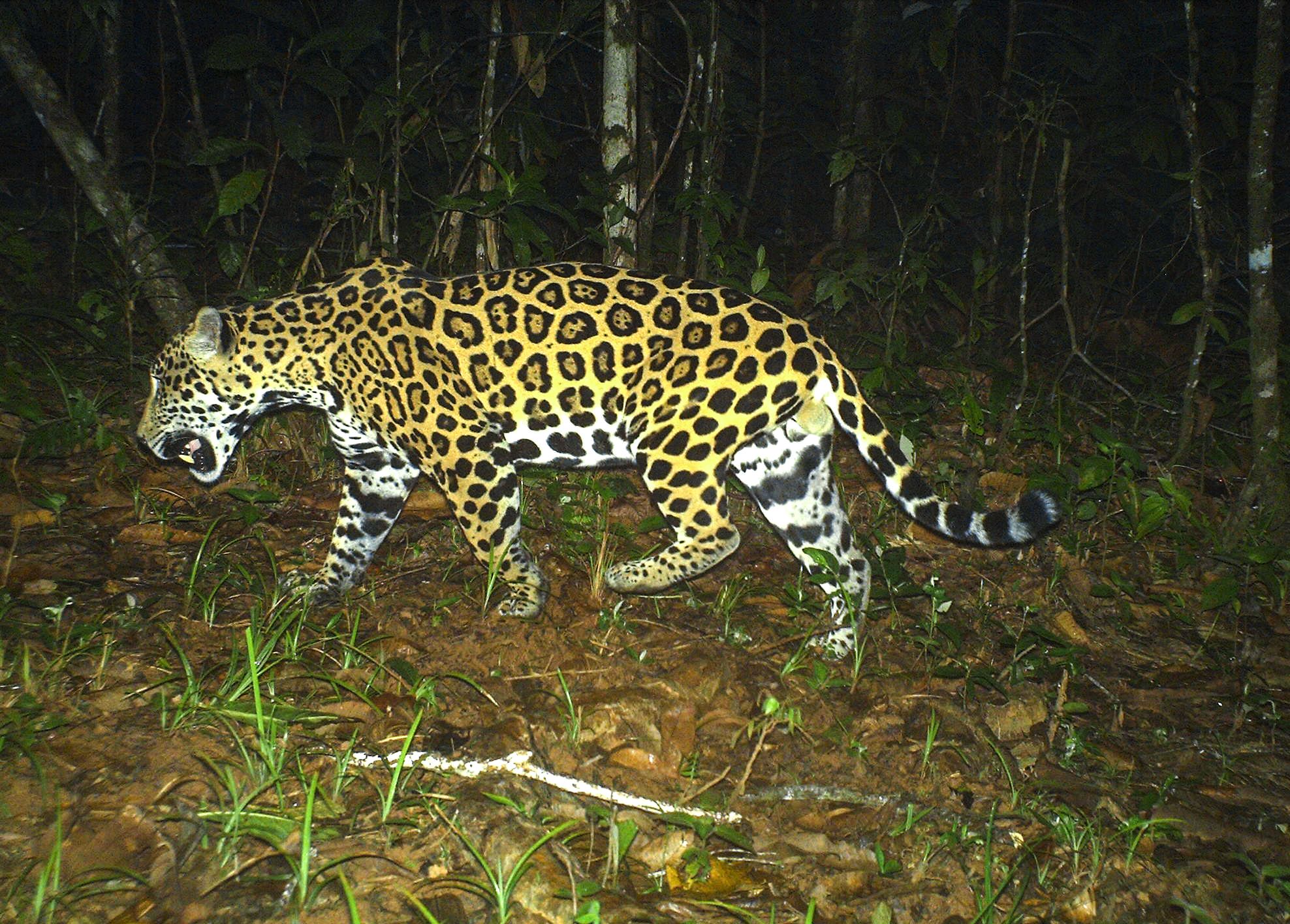
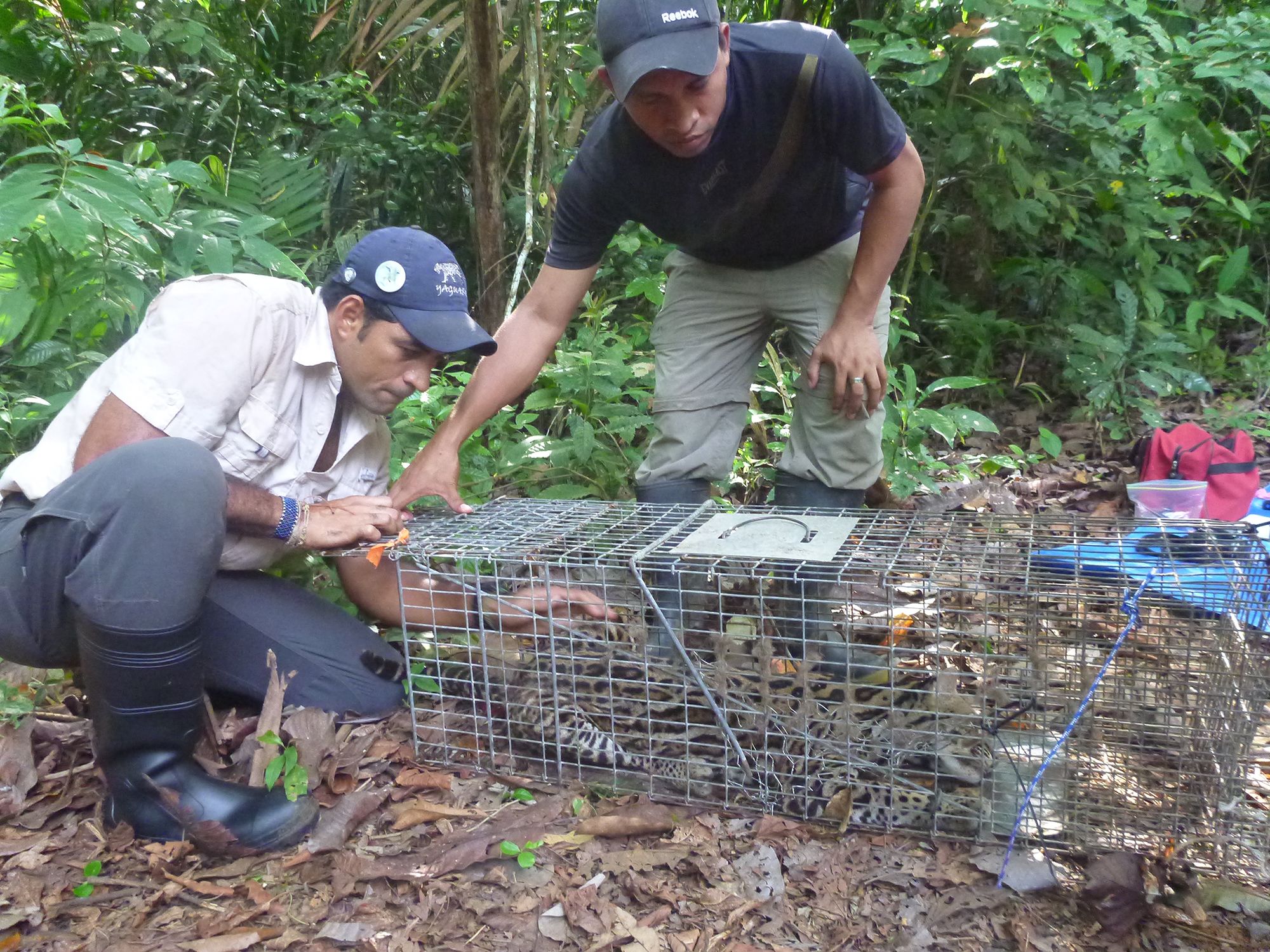
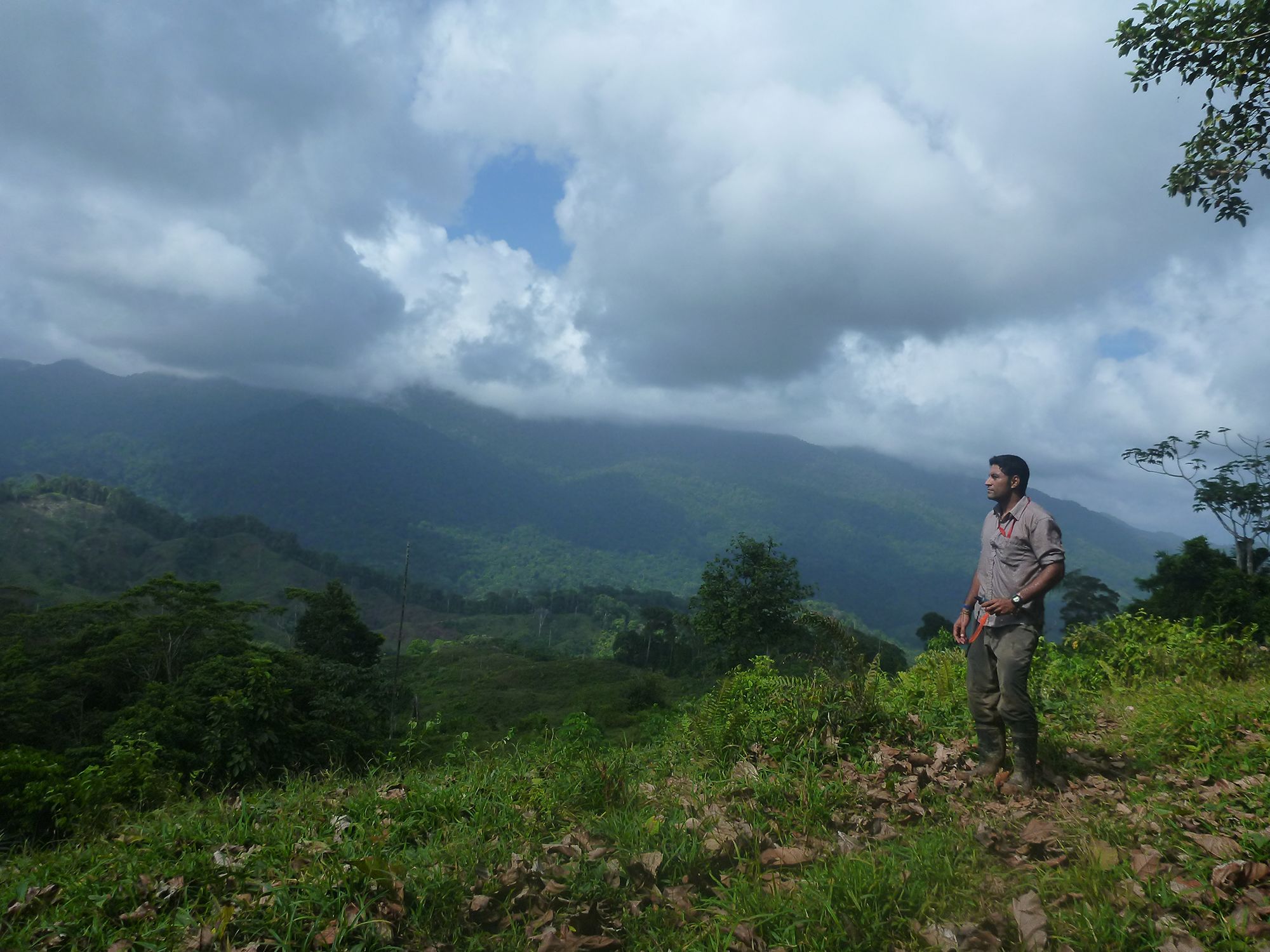

Photo of a jaguar taken by a camera trap.
Photo of a jaguar taken by a camera trap.

Ricardo Moreno monitoring jaguar. Photo: Elliot Brown
Ricardo Moreno monitoring jaguar. Photo: Elliot Brown

The Jaguar (Panthera Onca)
The jaguar is the largest carnivore and only native big cat in the Americas. Its range includes 18 countries from Mexico to Argentina. Jaguar populations are rapidly declining, and the species is listed as Near Threatened on the IUCN Red List.
Roughly 50 per cent of their original range is already lost, and the population is continuing to decline due to poaching, conflict with humans, land conversion and habitat fragmentation.
Their main stronghold today is the Amazon Basin, though they still exist in smaller numbers through Central America as well, including their remnant stronghold in Panama.
Panama’s situation is a microcosm of big cat fortunes globally: jaguar populations have been declining and are mostly limited to the wilderness of the Darién Gap. The intact and dense rainforests of the Darién region of Southern Panama offers some of the best remaining jaguar habitat in the Americas, and there is significant public support for the preservation of this critical jaguar corridor. However, cattle ranching and other economic pressures are slowly encroaching on jaguar habitat even in Darién.
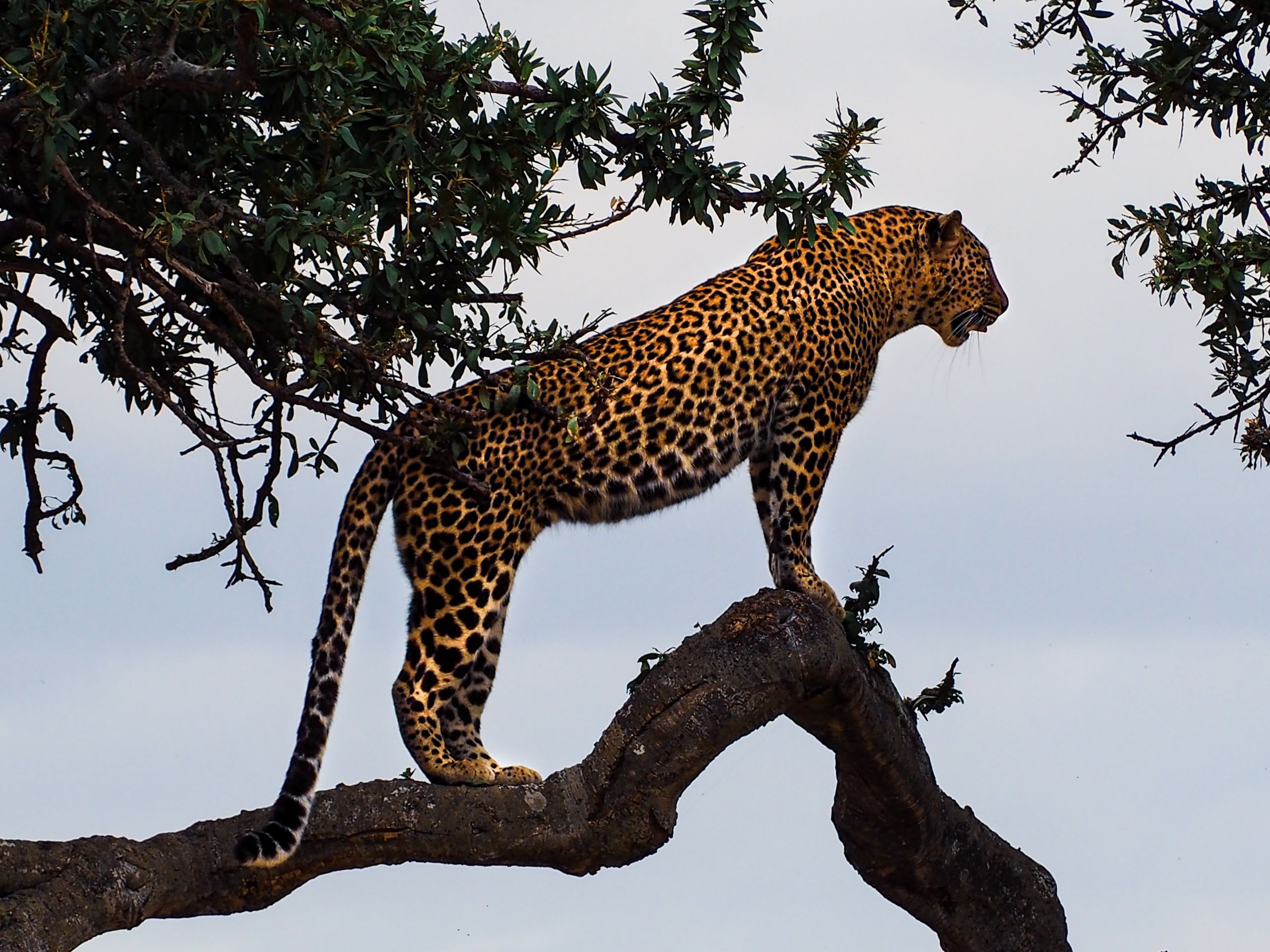
Yaguará
Ricardo Moreno knows that in Panama, one of the main threats to jaguars is human-wildlife conflict, which is responsible for the loss of approximately 15 jaguars annually.
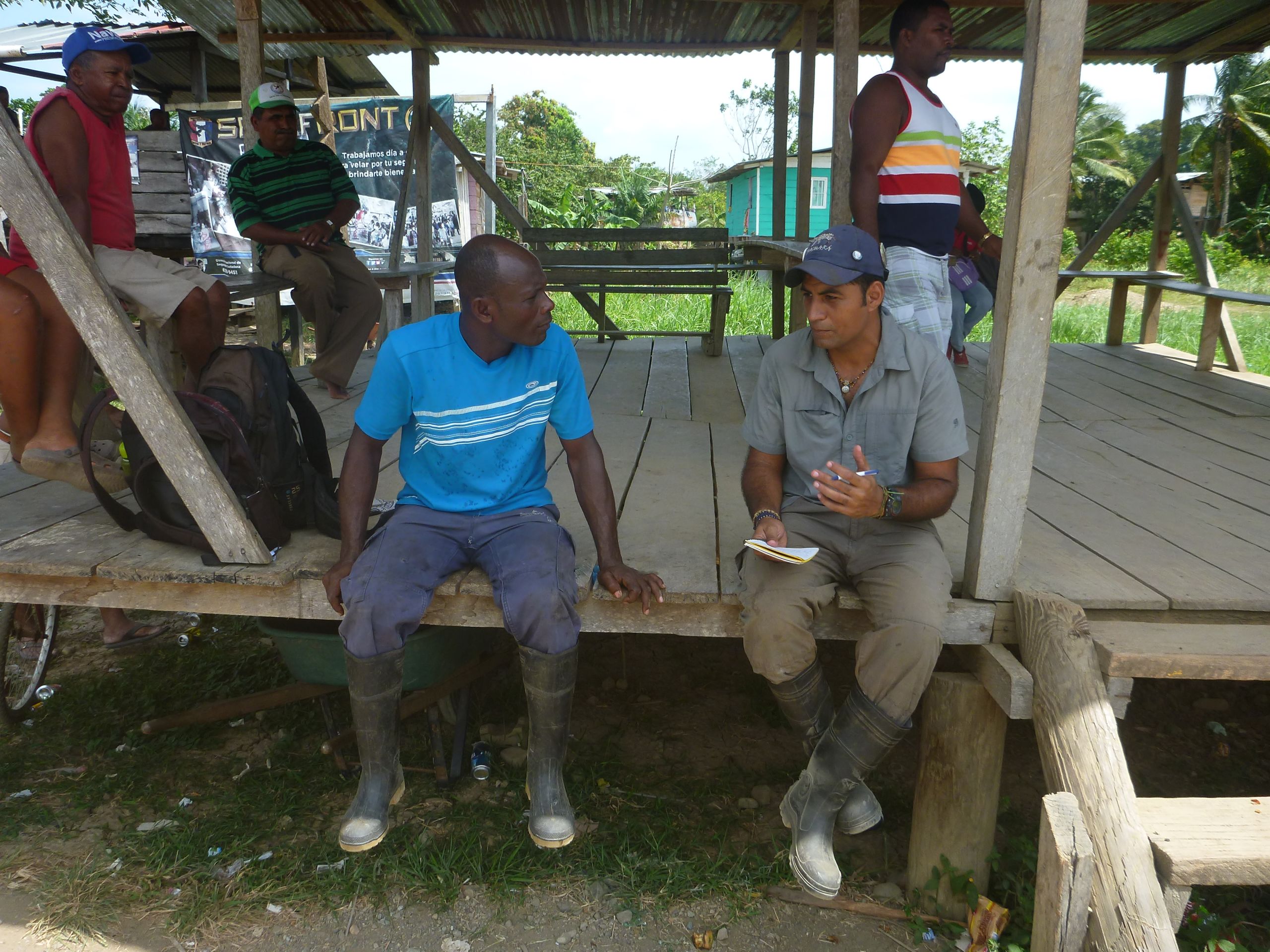
Ricardo Moreno talks with a farmer who has had conflicts with jaguars within his property.
Human-wildlife conflict occurs when animals pose a direct and recurring threat to the livelihood or safety of people, leading to assaults on a particular species. When locals perceive livestock or income losses as stemming from particular wildlife, retaliation against the (perceived) culprit species often ensues. It is also one of the most pressing threats to biodiversity conservation and sustainable development globally. These conflicts threaten the healthy co-existence of people and wildlife and undermine conservation efforts. Collaboration across disciplines and sectors is needed to address human-wildlife conflict worldwide.
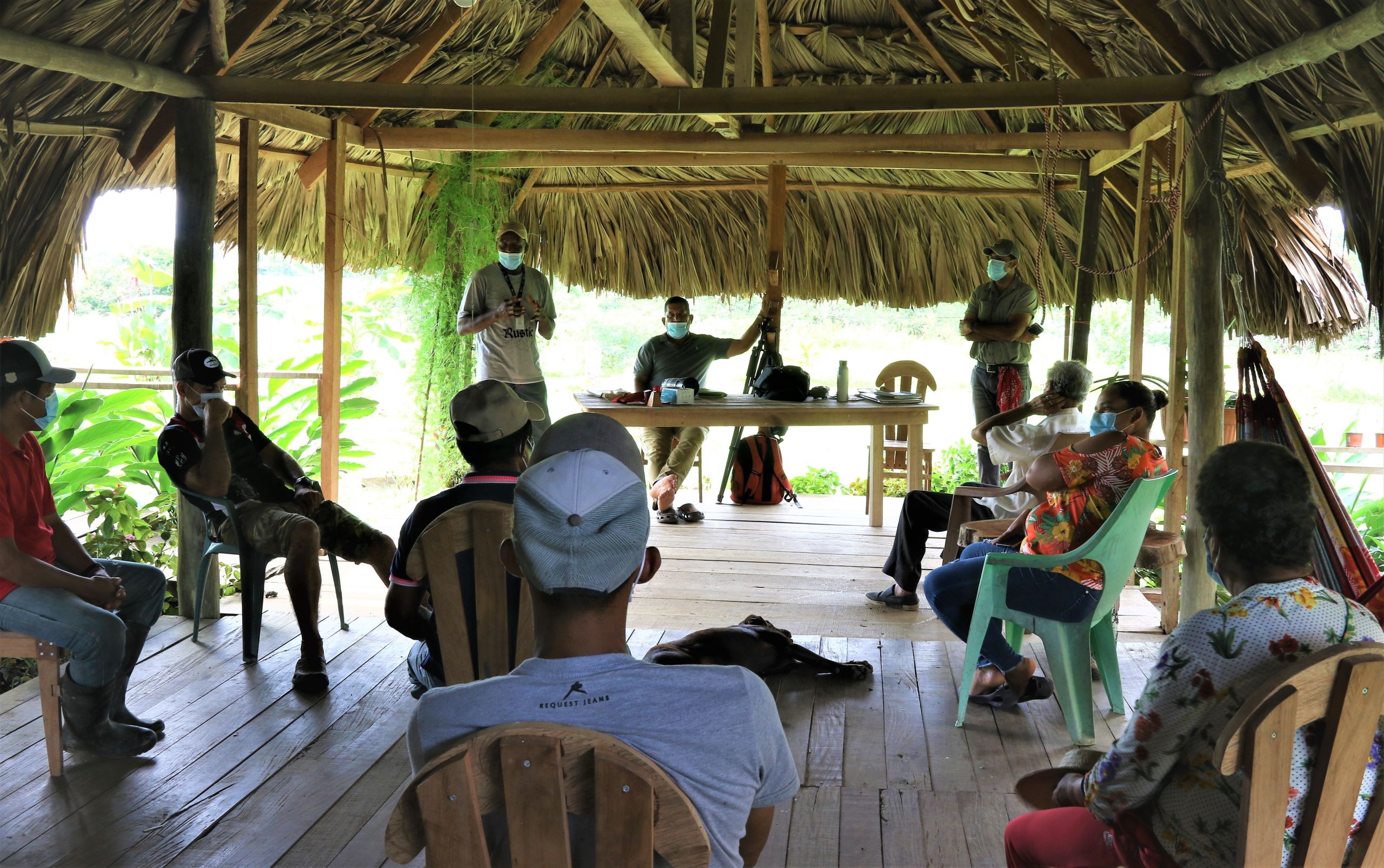
To alleviate this tension in Panama, Moreno’s local non-profit organisation, Yaguará, works to build knowledge and capacity among local populations to sustainably manage human-wildlife interactions.
Yaguará works with local communities through environmental education, scientific research, and the development of alternative livelihoods to reduce conflicts between people and jaguars.
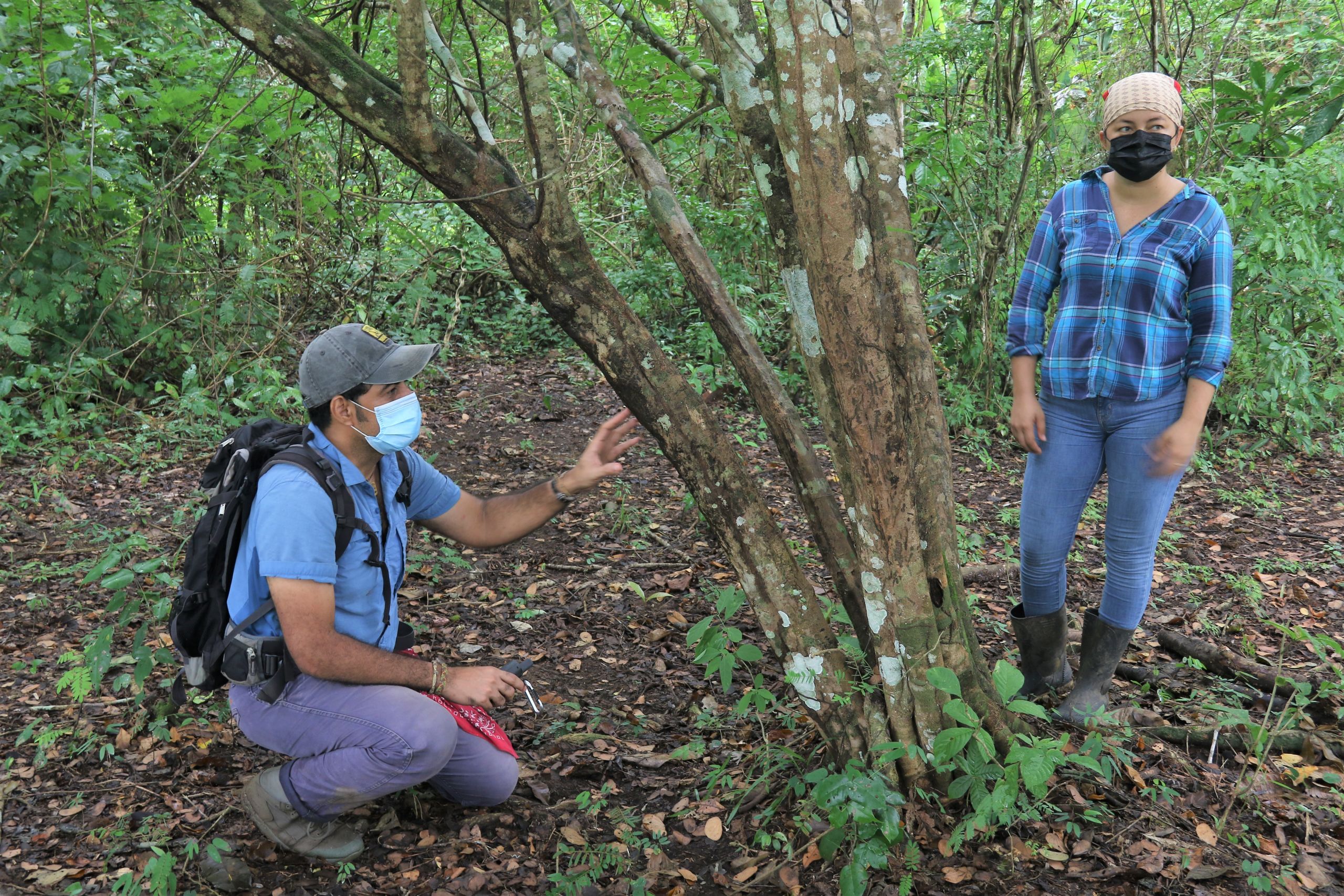
Jaguar expert from Fundación Yaguara, Ricardo Moreno, examining claw marks on a tree in the property of the cattle-farmer ´Elsi´.
Since 2017, with support from SGP, Yaguará has been working with the indigenous community of Pijibasal in a protected area spanning 575,000 hectares of critical habitat located in the buffer zone of the Darién National Park.
The project is increasing the availability of scientific information about jaguar populations in the area, and helping to improve conservation strategies for jaguars and other mammals in Darién National Park. The project has focused on community participatory monitoring of jaguars and their prey (tapirs and mountain pigs) using camera traps monitored by specially trained community groups.
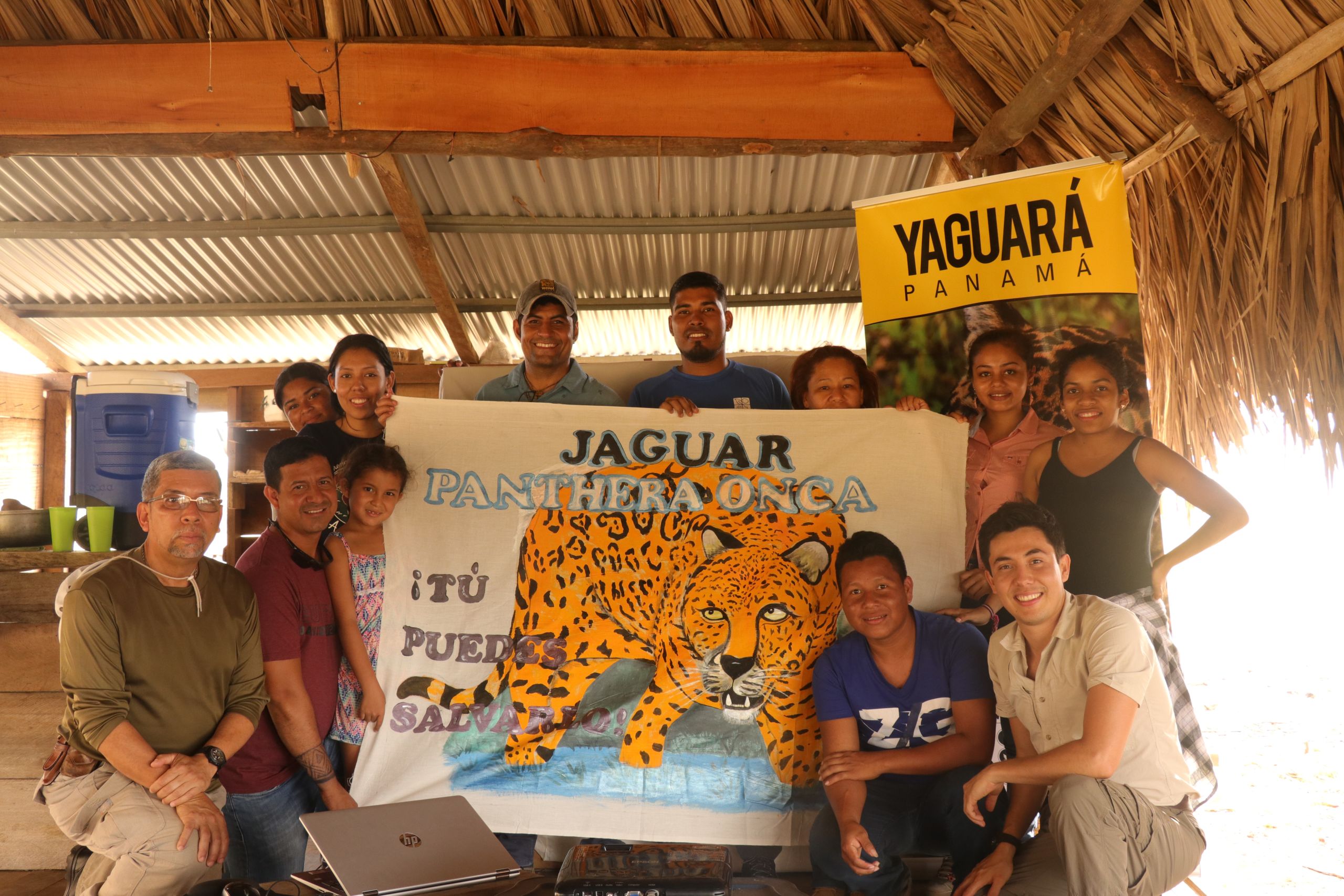
To increase local capacity for wildlife management, a network of 20 residents of Pijibasal and its neighbouring communities have been trained in conservation strategies to protect the jaguar and its habitat in the vicinity of Darién National Park. Yaguará has also developed communication materials on the animal, including a monthly magazine.
‘Knowing that Darién is an area where many jaguars are killed, we began to [train] people… we call these trainers “promoters” of the jaguar, who learn basic information about the jaguar’s [biology] and can train others in the community’

Ricardo Moreno talks with a farmer who has had conflicts with jaguars within his property.
Ricardo Moreno talks with a farmer who has had conflicts with jaguars within his property.


Jaguar expert from Fundación Yaguara, Ricardo Moreno, examining claw marks on a tree in the property of the cattle-farmer ´Elsi´.
Jaguar expert from Fundación Yaguara, Ricardo Moreno, examining claw marks on a tree in the property of the cattle-farmer ´Elsi´.

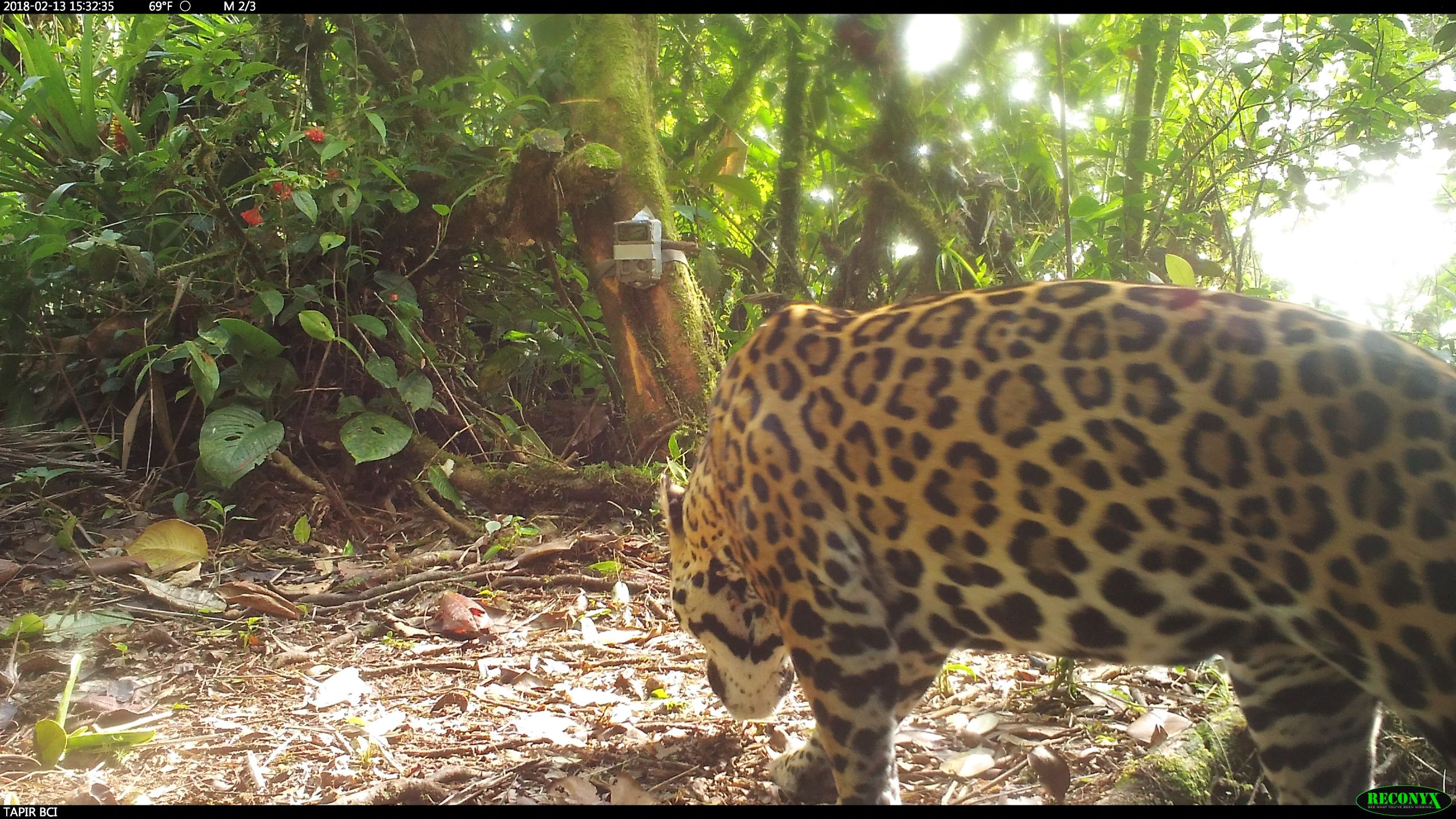
GEF SGP Big Cats Innovation Programme
In light of the increasing threats to big cats (including jaguars, tigers, snow leopards, lions, etc.) globally, SGP established a dedicated programme with partners in eight countries to focus on innovative ways to promote big cat conservation with local communities.
Launched in 2018, the Big Cats Innovation Programme seeks to advance conservation efforts benefitting big cat populations - protecting and restoring them and their habitats via field-based, action-oriented, direct and quantifiable strategic programmes initiated by local communities. The goal of the programme is to identify pioneering projects that will help halt the decline of these flagship species worldwide.
Projects cover a broad spectrum of activities including ecosystem conservation, education and awareness, scientific studies and monitoring, managing human-wildlife conflict, and empowering local communities by establishing economic opportunities. The programme also supports activities that seek to fulfil the recommendations of formal regional strategies and national action plans focused on big cat conservation.
As part of the SGP Big Cats Innovation Programme in Panama, in late 2019, eight project proposals were approved for a total of USD$200,000 in funding. Together the projects encompass various approaches to jaguar conservation, from traditional knowledge to science-based training and field monitoring, and work with indigenous communities, non-indigenous farmers, and rural populations. Each stakeholder has their own unique perspective and relationship with the jaguar, so it is crucial to work with the various cultural groups within Panama to ensure a holistic approach to conservation.
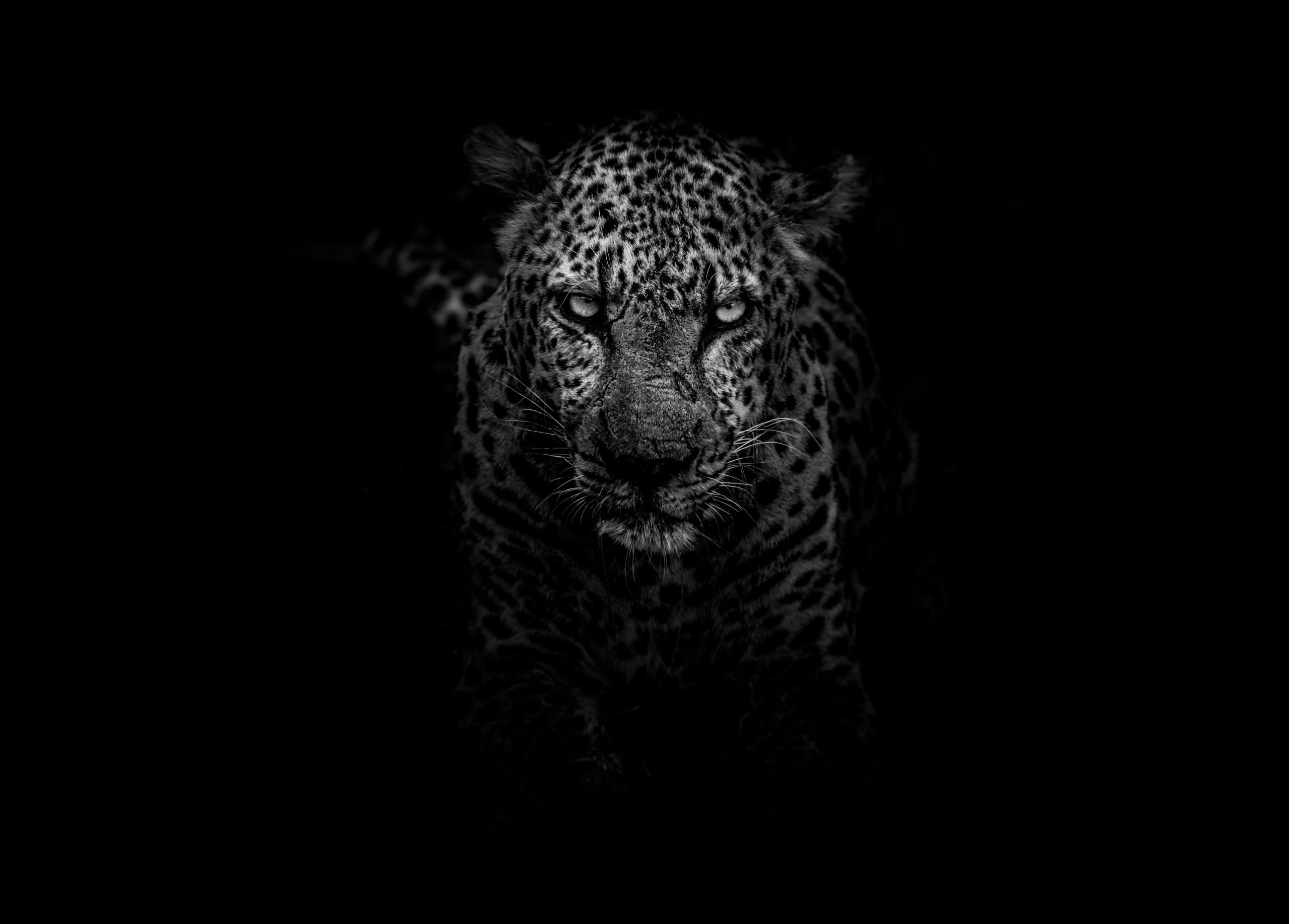
Community Action
Another project supported by the SGP to reduce human-wildlife conflict is an initiative led by the local organisation No al Machete which is working to introduce electric fences, bells, lights, and sound alarms in five cattle farms bordering the jaguars’ habitat, measures which they plan to replicate in the remaining 11 farms in the surrounding area.
These systems provide early alerts to the farming community on approaching jaguars, enabling farmers to take necessary precautions, and thereby reducing conflict and livestock losses.
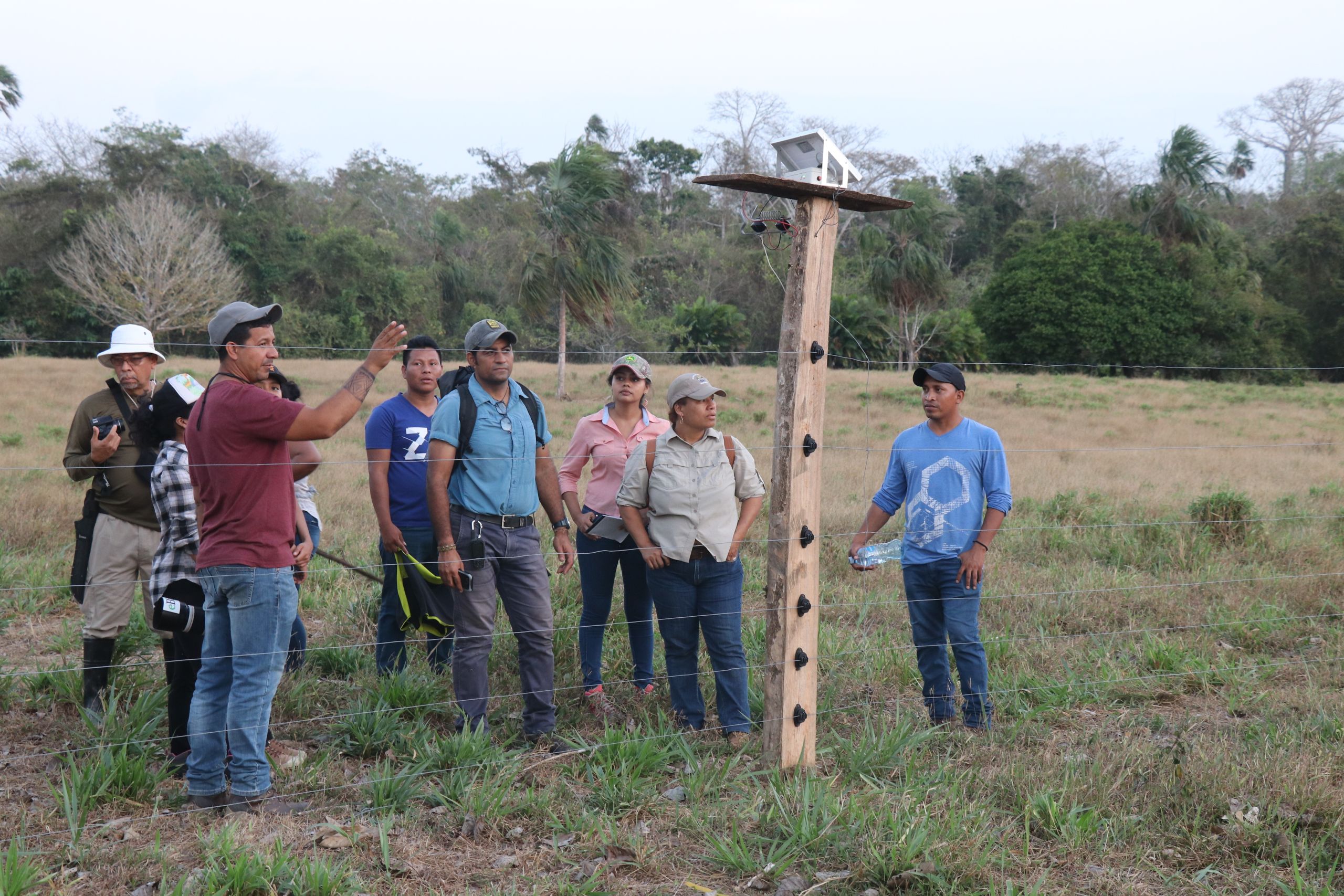
Representative of Fundación Yaguara with a member of the organization ´No al Machete´, inspecting the first farm with anti-predation 6-line electric fence installed to prevent jaguars from entering to hunt livestock. Darién, Panamá.
The project is also working with the NGO Green Rainforest in Chagres National Park to establish community groups that can quickly intercede to stop the hunting of jaguars when conflicts arise.
Another key strategy to reduce human-jaguar conflict is promoting ecotourism and environmental education around jaguar conservation. This is being managed by Fundación para el Desarrollo Integral Comunitario y conservación de los ecosistemas en Panamá (FUNDICEPP, or Foundation for Comprehensive Community Development and Conservation of Ecosystems in Panama in English), to carry out an educational campaign in schools and communities in the buffer zone around La Amistad National Park, where humans and wildlife can be in conflict.
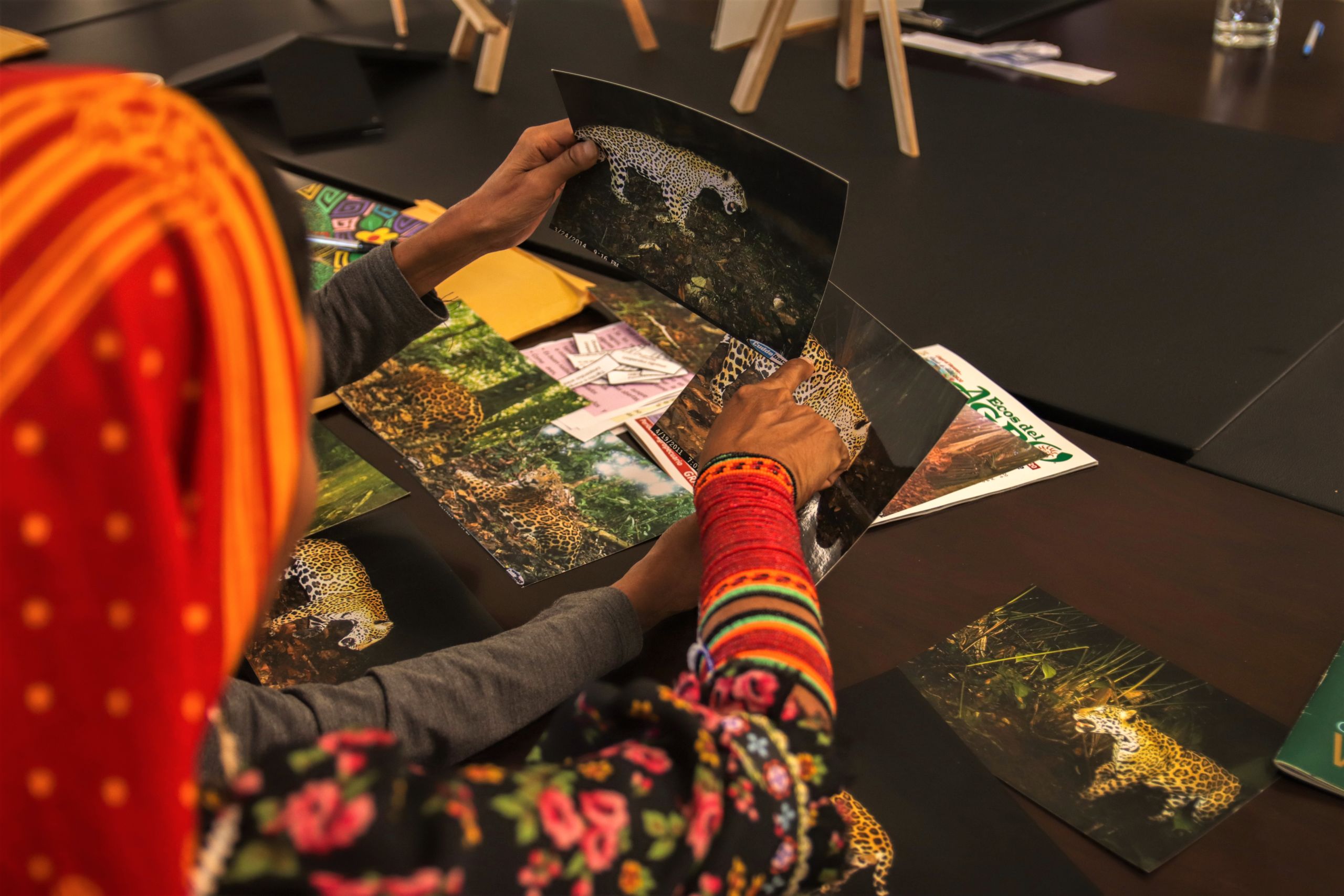
Environmental education workshop with local and indigenous community organizations: studying jaguar paw prints.
Another project currently supported by SGP is the creation of a ‘Jaguar Route’ in the forest surrounding the community of La Muela, which borders the Santa Fe National Park; the Jaguar Route serves as a venue where visitors can learn more about the jaguar and its habitat.

The Cooperativa de Turismo de Santa Fe aims to use low-impact rural community tourism to demonstrate how jaguar conservation can directly benefit the local population and generate much-needed income for families.

Representative of Fundación Yaguara with a member of the organization ´No al Machete´, inspecting the first farm with anti-predation 6-line electric fence installed to prevent jaguars from entering to hunt livestock. Darién, Panamá.
Representative of Fundación Yaguara with a member of the organization ´No al Machete´, inspecting the first farm with anti-predation 6-line electric fence installed to prevent jaguars from entering to hunt livestock. Darién, Panamá.

Environmental education workshop with local and indigenous community organizations: studying jaguar paw prints.
Environmental education workshop with local and indigenous community organizations: studying jaguar paw prints.

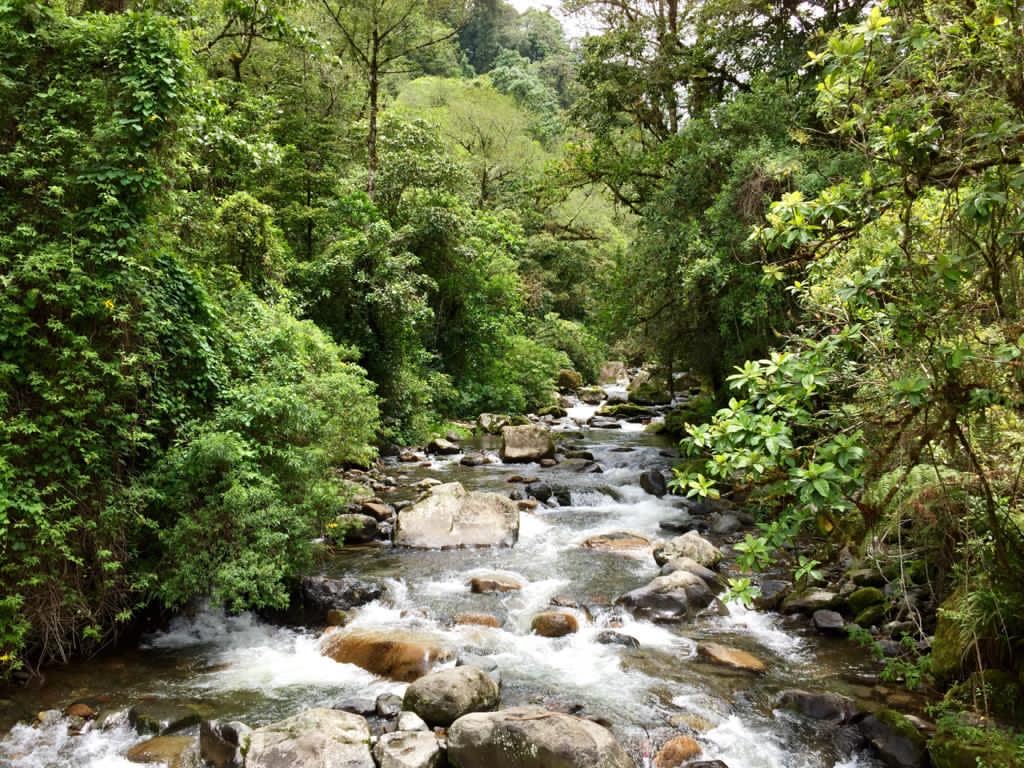
Jaguar Conservation and Indigenous Peoples
It is vital to highlight the key role indigenous communities play in efforts to protect and conserve Jaguar populations. Not only do indigenous lands contain pristine primary forests, but the jaguar is also a key part of cultural identity and traditional belief systems.
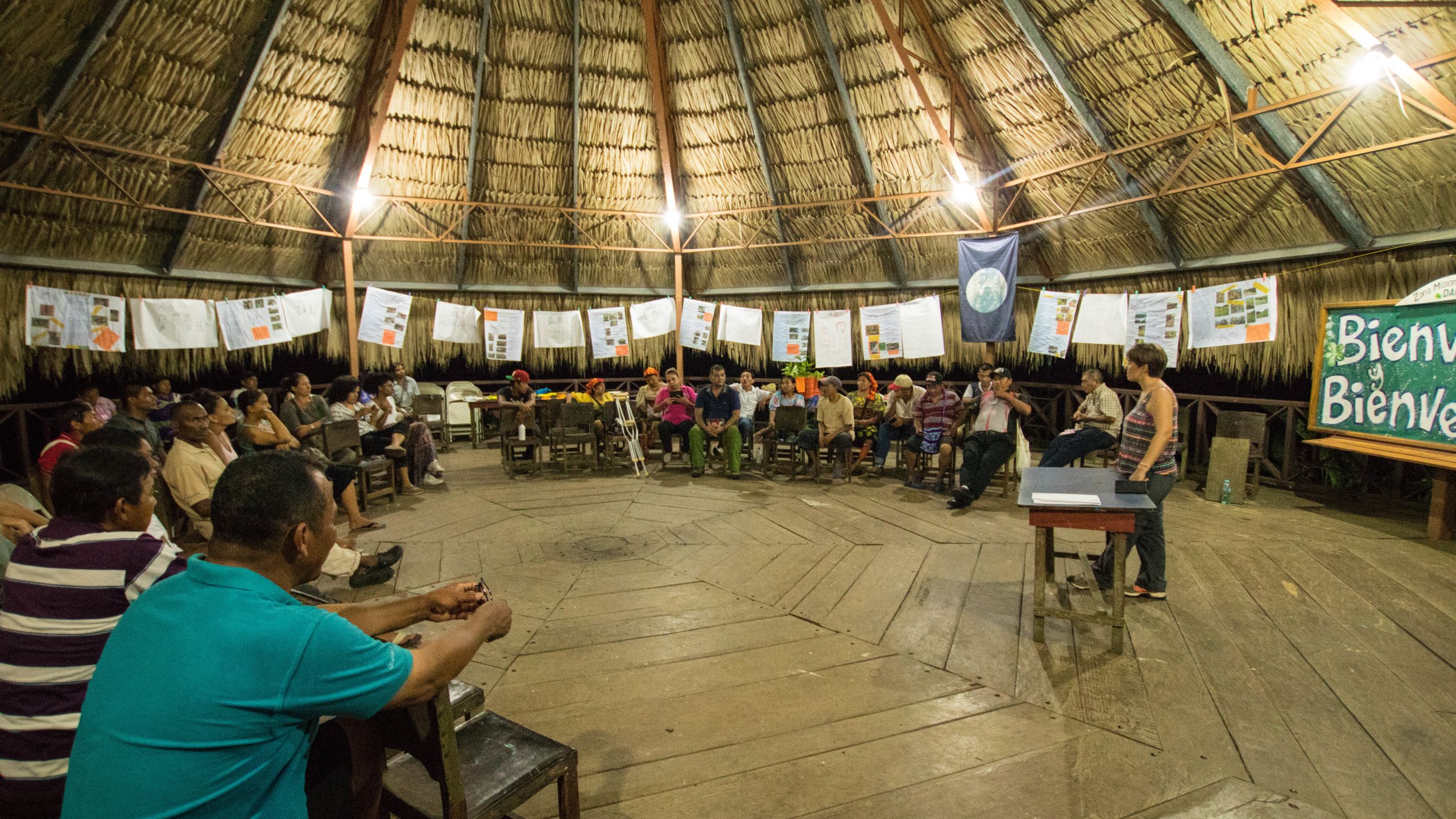
Intercambio Darién
‘We are creating synergy between scientific knowledge and the traditional knowledge of forest spirituality (for the Embera and Guna) people. The idea of the project comes from the need to rescue our traditional culture and the spirituality of the forest. To lose the jaguar is to lose the essence of oneself. Yaguará is helping us by contributing the scientific aspects such as camera traps and knowledge of the biology of the jaguar.'
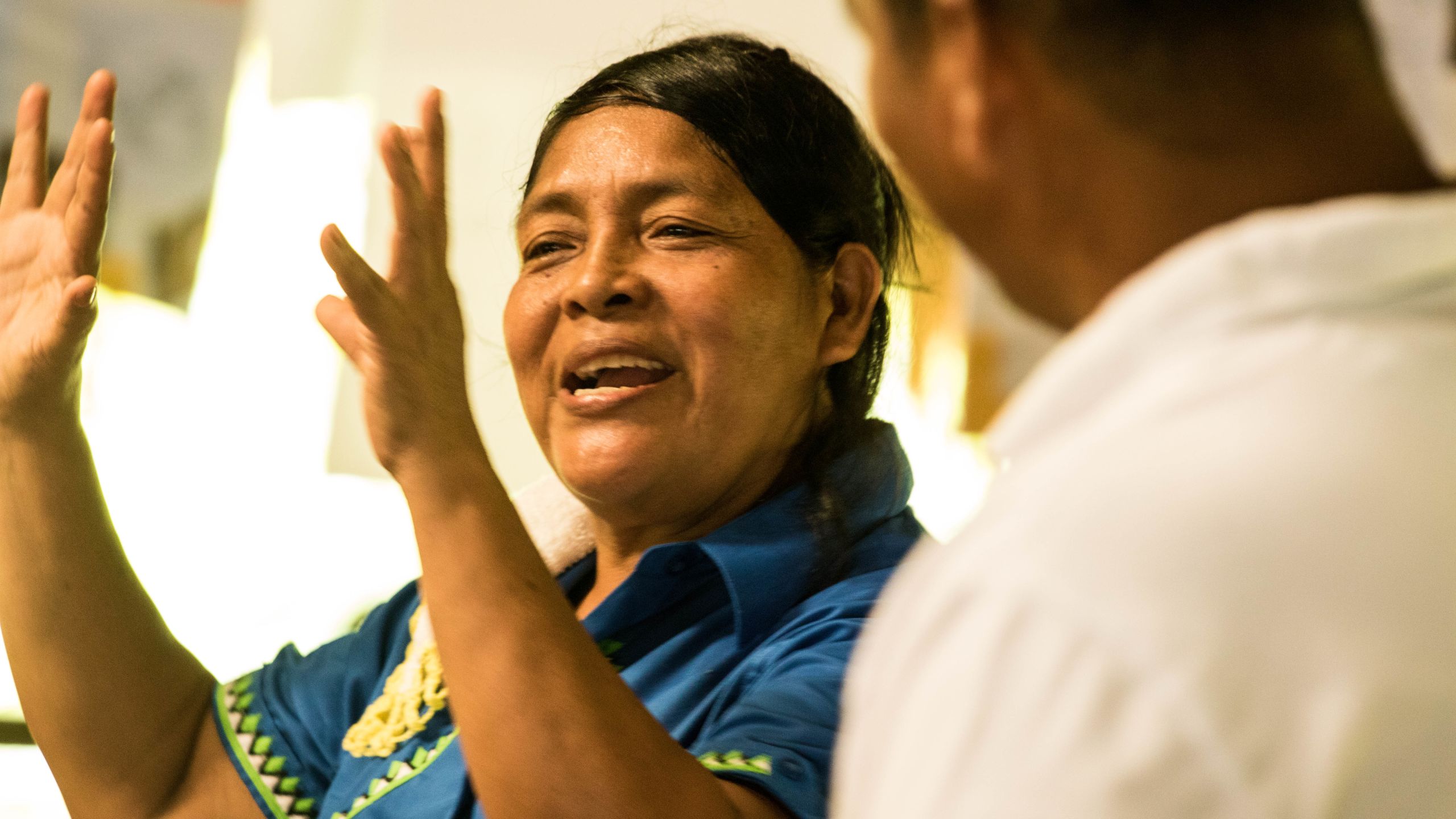
This is why it is essential that efforts to conserve the jaguar work hand-in-hand with indigenous groups, such as the SGP-supported projects led by ANAAT – the Asociación Ambiental Naso Tjer Di or Environmental Association for Naso indigenous territory in English, OMIUBP (Embera groups in Darién, Guna groups in Guna Yala), and FUNDICEPP (Comarca Gnöbe Buglé).
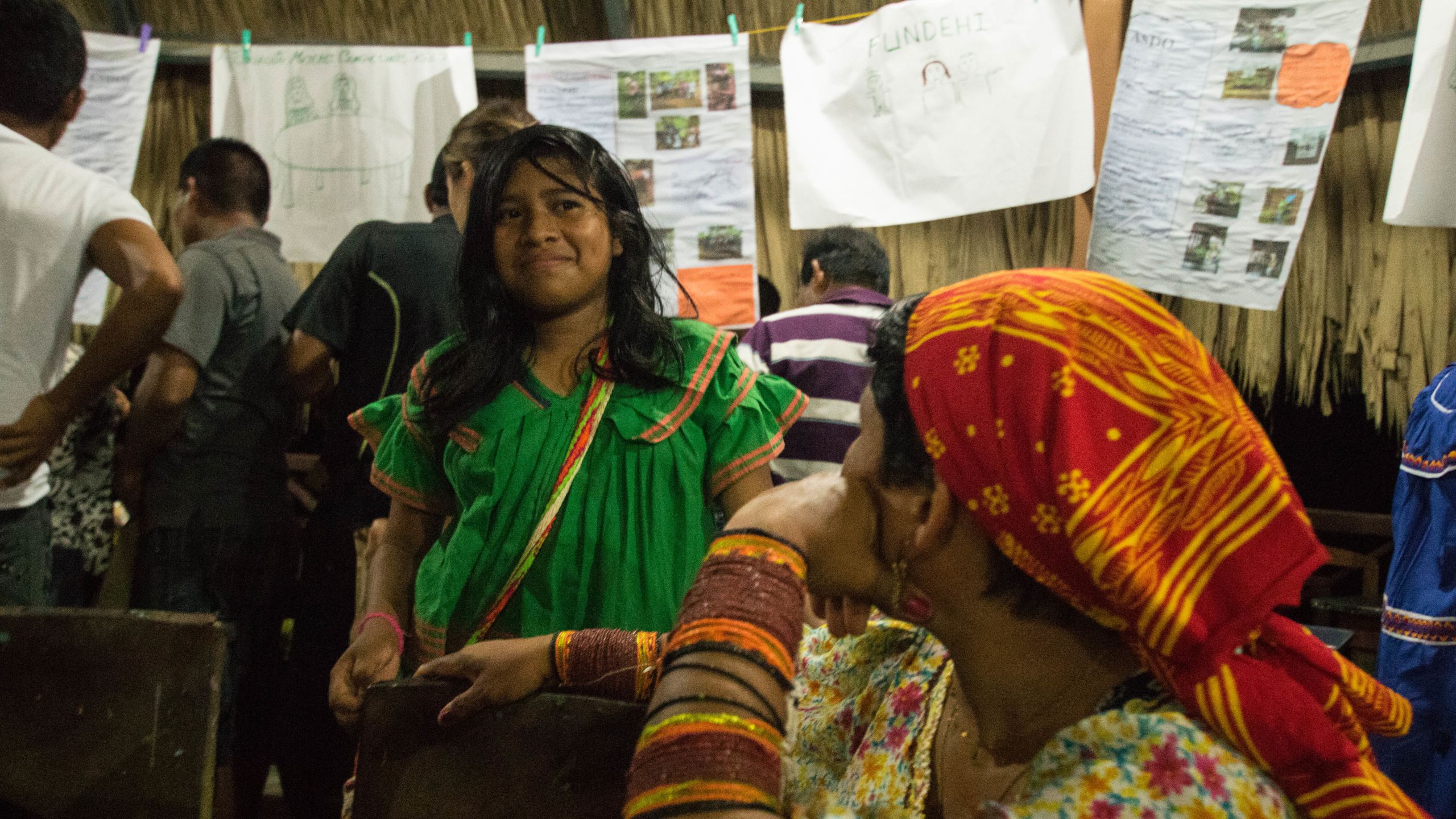
The project headed by OMIUBP recently translated an informative video on jaguars by Yaguará into two widespread indigenous languages (Embera and Guna) in an effort to make knowledge more accessible to indigenous communities.
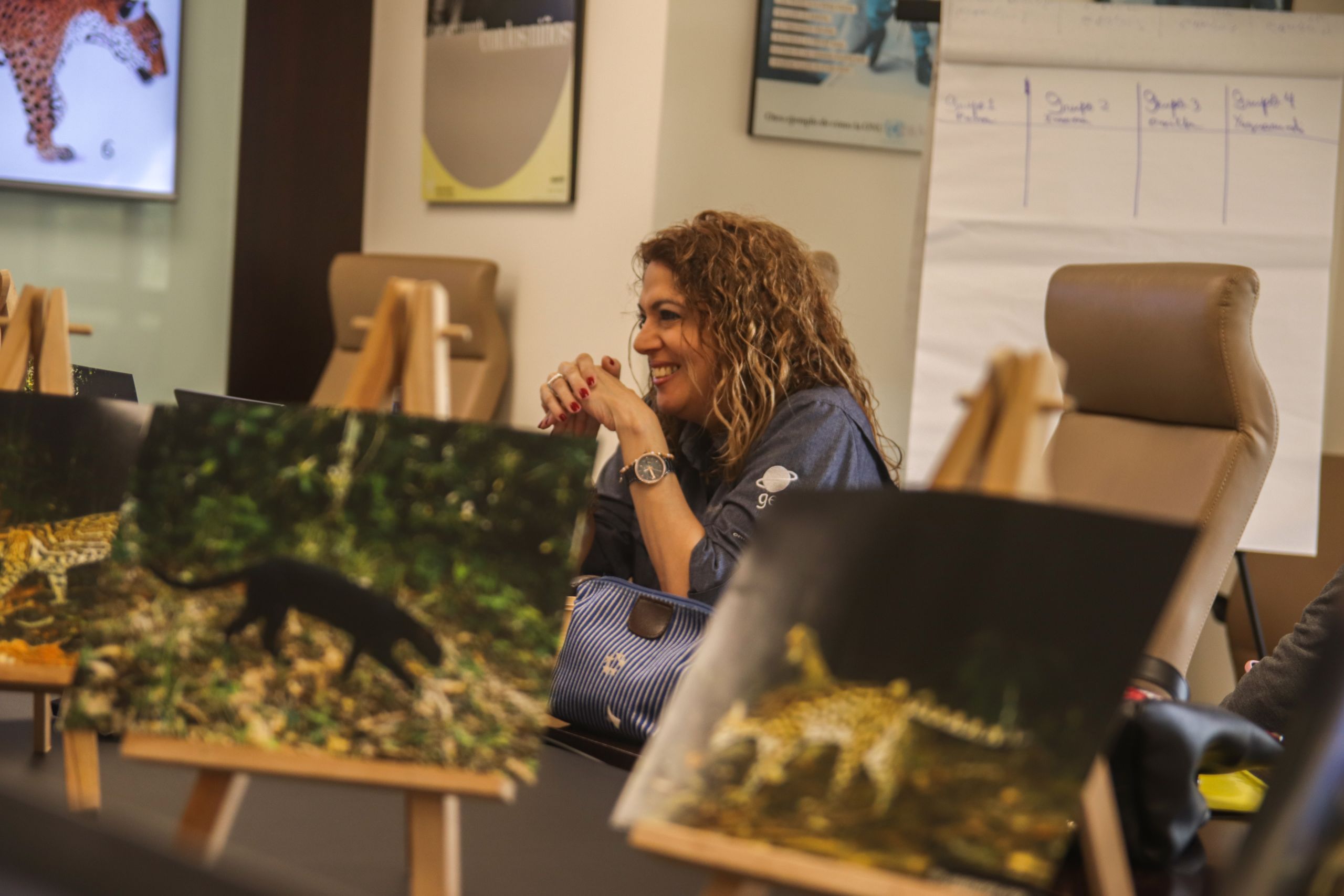

Intercambio Darién
Intercambio Darién



'Together, we will create a difference and a better coexistence between humans and big cats,’ Ricardo Moreno, Fundación Yaguará Panamá.
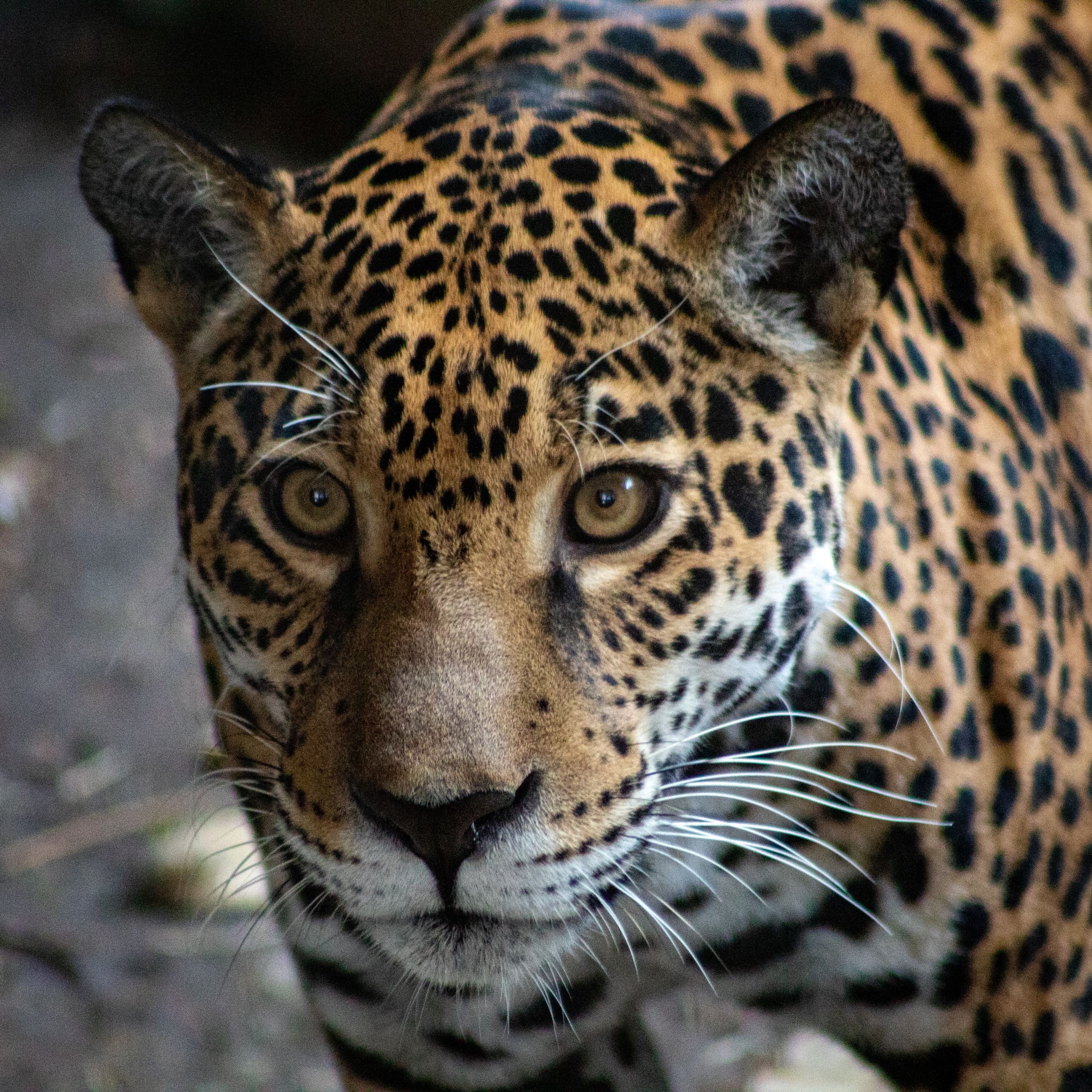
Small Grants = Big Impacts
SGP provides financial and technical support to civil society and community-driven initiatives that that address global environmental issues while improving quality of life.
Since 2006, the Small Grants Program has supported more than 170 projects in Panama.
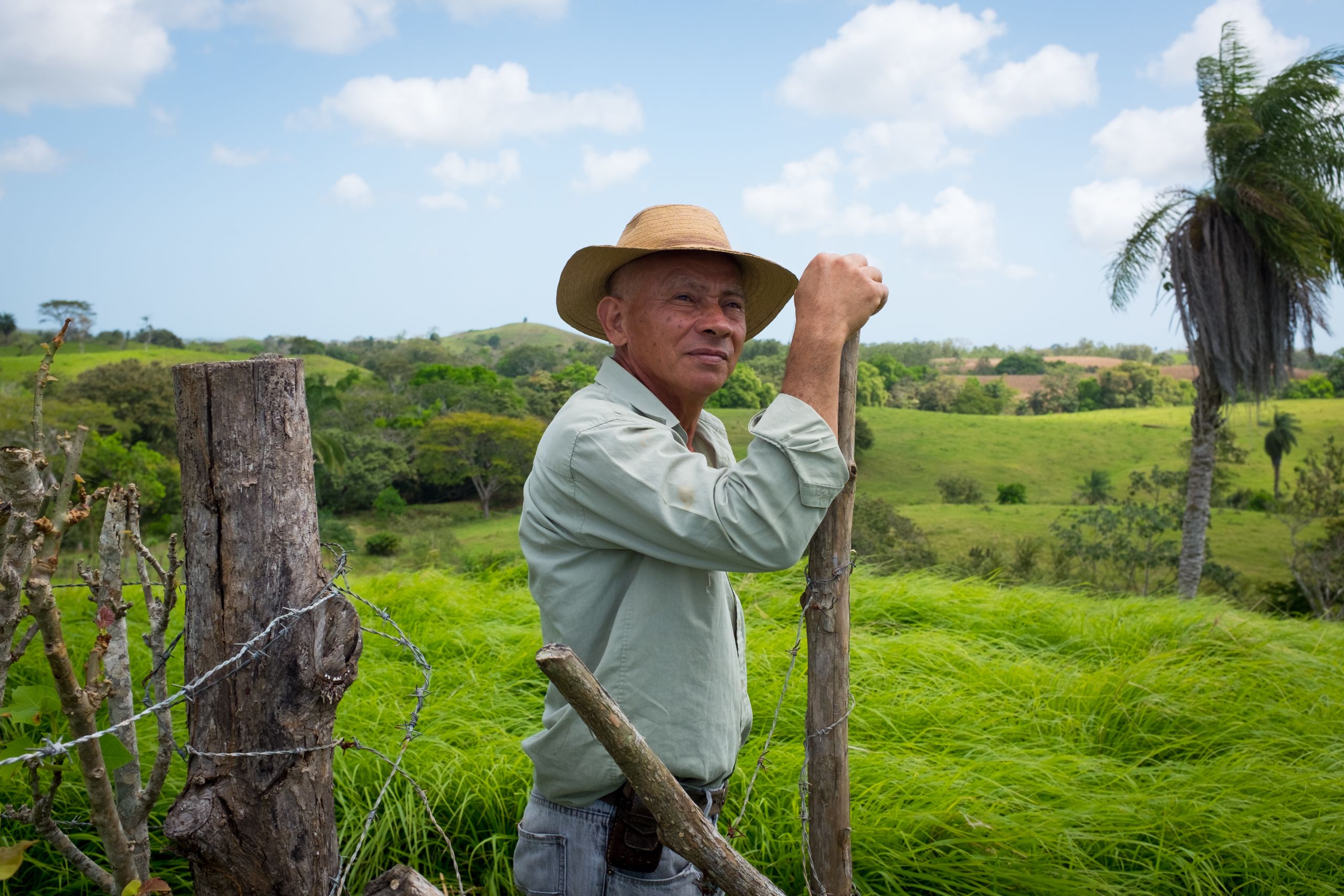
For more information on SGP-supported projects in Panama, visit the SGP Panama Country Page.
For more information on the GEF SGP Big Cats Innovation Programme, please visit here.
Visit the SGP website for details on the overall Small Grants Programme.


Story by Elliese Judge, Beatriz Schmitt, Terence Hay- Edie, Rissa Edoo, Andrea Egan
Photos: © Courtesy of Fundación Yaguará Panamá, Andrea Egan/UNDP and Madison Denkers.
Header photo: Uriel Soberanes, Unsplash
Location: Panamá
